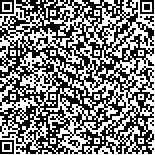| Quote
: |
杨毅,李若冰,黄丽娜,王博,蒋希成.基于脂质与动脉粥样硬化通路探讨侯氏黑散治疗脑缺血再灌注损伤的机制研究[J].湖南中医药大学学报英文版,2024,44(4):675-688.[Click to copy
] |
|
| |
|
|
| This paper
:Browser 1674times Download 991times |
| 基于脂质与动脉粥样硬化通路探讨侯氏黑散治疗脑缺血再灌注损伤的机制研究 |
| 杨毅,李若冰,黄丽娜,王博,蒋希成 |
| (黑龙江中医药大学, 黑龙江 哈尔滨 150040) |
| 摘要: |
| 目的 利用网络药理学和动物实验验证分析《金匮要略》侯氏黑散治疗脑缺血再灌注损伤(cerebral ischemia reperfusion injury,CIRI)的成分、靶点及信号通路,并通过脂质与动脉粥样硬化通路研究其作用机制。方法 在TCMIP、GeneCards和OMIM疾病数据库获取侯氏黑散与CIRI的交集靶点,使用STRING网站构建交集靶点的蛋白质-蛋白质相互作用(protein-protein interaction,PPI)网络,使用Cytoscape软件筛选核心靶点和成分并构建"成分-靶点"网络。使用R语言进行GO和KEGG富集分析,使用AutoDock Vina验证成分与靶点的对接能。动物实验中将60只SPF级SD大鼠随机分为假手术组、模型组、西药组和侯氏黑散低、中、高剂量组。用线栓法制备大脑中动脉闭塞/再灌注(middle cerebral artery occlusion/reperfusion,MCAO/R)大鼠模型,造模7 d后通过改良神经功能评分(modifiedneurological severity score,mNSS)评估神经功能,TTC染色检测脑梗死体积,HE染色观察脑组织病理变化,全自动生化分析仪检测血清低密度脂蛋白胆固醇(low density lipoprotein cholesterol,LDL-C)、高密度脂蛋白胆固醇(how density lipoprotein cholesterol,HDL-C)、总胆固醇(total cholesterol,TC)和甘油三酯(triglycerides,TG)含量,ELISA检测血清白介素-1β(interleukin 1β,IL-1β)、白介素-6(interleukin-6,IL-6)和肿瘤坏死因子-α(tumor necrosis factor-α,TNF-α)水平,免疫组织化学和RT-qPCR检测脑组织中HSP90AA1、NF-κB1、SRC的蛋白及mRNA表达水平。结果 从侯氏黑散中筛选得到508种有效成分及549个药物靶标,1 592个CIRI疾病靶点,交集靶点共153个,核心靶点为HSP90AA1、SRC、NF-κB1,与棕榈酸、三磷酸腺苷、穿贝海绵甾醇、腺苷等核心成分均具有较强的结合力。GO富集分析的生物过程主要涉及对外源性刺激的反应、位置维护、炎症反应的调节等,KEGG通路分析主要富集在脂质和动脉粥样硬化、cAMP信号通路、花生四烯酸代谢等。与模型组相比,侯氏黑散各剂量组mNSS评分、脑梗死率、血清IL-1β、IL-6和TNF-α含量、脑组织HSP90AA1蛋白表达水平和HSP90AA1、NF-κB1和SRC mRNA表达水平降低(P<0.05,P<0.01);侯氏黑散高剂量组LDL-C、TC、TG水平降低(P<0.05,P<0.01),HDL-C水平增高(P<0.05);侯氏黑散中剂量组TG水平降低(P<0.01);西药组和侯氏黑散中、高剂量组NF-κB1和SRC蛋白表达水平降低(P<0.05,P<0.01)。与侯氏黑散低剂量组相比,侯氏黑散中、高剂量组mNSS评分、脑梗死率,血清TG水平,血清IL-1β、IL-6和TNF-α含量,脑组织中NF-κB1 mRNA表达水平均显著降低(P<0.01);侯氏黑散高剂量组脑组织HSP90AA1、NF-κB1和SRC蛋白表达水平和HSP90AA1、NF-κB1 mRNA表达水平降低(P<0.05,P<0.01)。与侯氏黑散中剂量组相比,侯氏黑散高剂量组mNSS评分、脑梗死率,血清IL-1β、IL-6和TNF-α含量,脑组织HSP90AA1蛋白表达水平和NF-κB1 mRNA表达水平降低(P<0.05,P<0.01)。结论 侯氏黑散以多成分、多靶点、多通路治疗CIRI,其中抑制核心靶点HSP90AA1、NF-κB1、SRC的mRNA和蛋白表达,调控脂质与动脉粥样硬化通路是侯氏黑散治疗CIRI的重要机制。 |
| 关键词: 侯氏黑散 脑缺血再灌注损伤 脂质与动脉粥样硬化通路 网络药理学 动物实验 |
| DOI:10.3969/j.issn.1674-070X.2024.04.025 |
| Received:September 06, 2023 |
| 基金项目:国家自然科学基金面上项目(82174261,81673865);黑龙江省自然科学基金联合引导项目(LH2021H084);黑龙江中医药大学新药临床前研究基金项目(2019XY01)。 |
|
| Mechanism of Hou's Black Powder in treating cerebral ischemia reperfusion injury based on lipid and atherosclerosis pathways |
| YANG Yi,LI Ruobing,HUANG Lina,WANG Bo,JIANG Xicheng |
| (Heilongjiang University of Chinese Medicine, Harbin, Heilongjiang 150040, China) |
| Abstract: |
| Objective To verify and analyze the ingredients,targets,and signaling pathways of Hou's Black Powder (HBP) from Jin Gui Yao Lve (Essentials from the Golden Cabinet) in treating cerebral ischemia reperfusion injury (CIRI) by network pharmacology and animal experiments,and to investigate its mechanism of action through lipid and atherosclerosis pathways.Methods The intersection targets of HBP and CIRI were obtained from TCM Integrated Pharmacology Research Platform (TCMIP) V2.0,GeneCards,and OMIM disease databases,and their protein-protein interaction (PPI) network was constructed using the STRING website.Cytoscape was used to screen the core targets and ingredients and to construct an ingredient-target network.R language was used for GO and KEGG enrichment analyses,and AutoDock Vina was employed to verify the docking ability between ingredients and targets.In animal experiments,sixty SPF-grade SD rats were randomized into sham-operated group,model group,western medicine group,and low-,medium-,and high-dose HBP groups.A MCAO/R rat model was prepared by suture-occluded method.Seven days after modeling,the rat neurological function was evaluated by modified neurological severity score (mNSS).The volume of cerebral infarction was determined by TTC staining and the pathological changes of the brain tissue were observed by HE staining.The serum content of low density lipoprotein cholesterol (LDL-C),high density lipoprotein cholesterol (HDL-C),total cholesterol (TC),and triglycerides (TG) was measured by fully automatic biochemical analyzer.The serum levels of interleukin 1β(IL-1β),interleukin-6(IL-6),and tumor necrosis factor-α(TNF-α) were examined by ELISA.The protein and mRNA expressions of HSP90AA1,NF-κB1,and SRC in the brain tissue were measured by immunohistochemistry and RT-qPCR.Results A total of 508 active ingredients,549 drug targets and 1,592 CIRI disease targets were screened from HBP.A total of 153 intersection targets were found,with HSP90AA1,SRC,and NF-κB1 identified as the core targets.These core targets exhibited a strong binding affinity with core ingredients such as palmitic acid,adenosine triphosphate,clionasterol,and adenosine.The biological processes of GO enrichment analysis mainly involved the response to exogenous stimuli,location maintenance,and inflammatory response regulation.KEGG pathway analysis was primarily enriched in lipid and atherosclerosis pathways,cAMP signal pathway,and arachidonic acid metabolism.Compared with the model group,the mNSS score,cerebral infarction rate,serum content of IL-1β,IL-6,and TNF-α,as well as HSP90AA1 protein expression level and mRNA expression levels of HSP0AA1,NF-κB1,and SRC in the brain issue of each dose HBP group decreased (P<0.05,P<0.01);the levels of LDL-C,TC,and TG decreased in high-dose HBP group (P<0.05,P<0.01),while the HDL-C level increased (P<0.05);the TG level in medium-dose HBP group decreased (P<0.01);the protein expression levels of NF-κB1 and SRC decreased in western medicine group and medium-and high-dose HBP groups (P<0.05,P<0.01).Compared with low-dose HBP group,the mNSS scores,cerebral infarction rates,serum levels of TG,serum content of IL-1β,IL-6,and TNF-α,and mRNA expression levels of NF-κB1 in the brain tissue of the medium-and high-dose HBP groups decreased significantly (P<0.01);the protein expression levels of HSP90AA1,NF-κB1,and SRC and the mRNA expression levels of HSP90AA1 and NF-κB1 in the brain tissue of high-dose HBP group decreased (P<0.05,P<0.01).Compared with medium-dose HBP group,the high-dose HBP group showed reduced mNSS score,cerebral infarction rate,and serum content of IL-1β,IL-6,and TNF-α,as well as decreased expression levels of HSP90AA1 protein and NF-κB1 mRNA in the brain tissue (P<0.05,P<0.01).Conclusion Hou's Black Powder treats CIRI with a multi-ingredient,multi-target and multi-pathway approach.A key mechanism of its therapeutic effect involves suppressing the mRNA and protein expressions of the core targets HSP90AA1,NF-κB1,and SRC,as well as regulating the lipid and atherosclerosis pathways. |
| Key words: Hou's Black Powder cerebral ischemia reperfusion injury lipid and atherosclerosis pathways network pharmacology animal experiment |
|

二维码(扫一下试试看!) |
|
|
|
|


